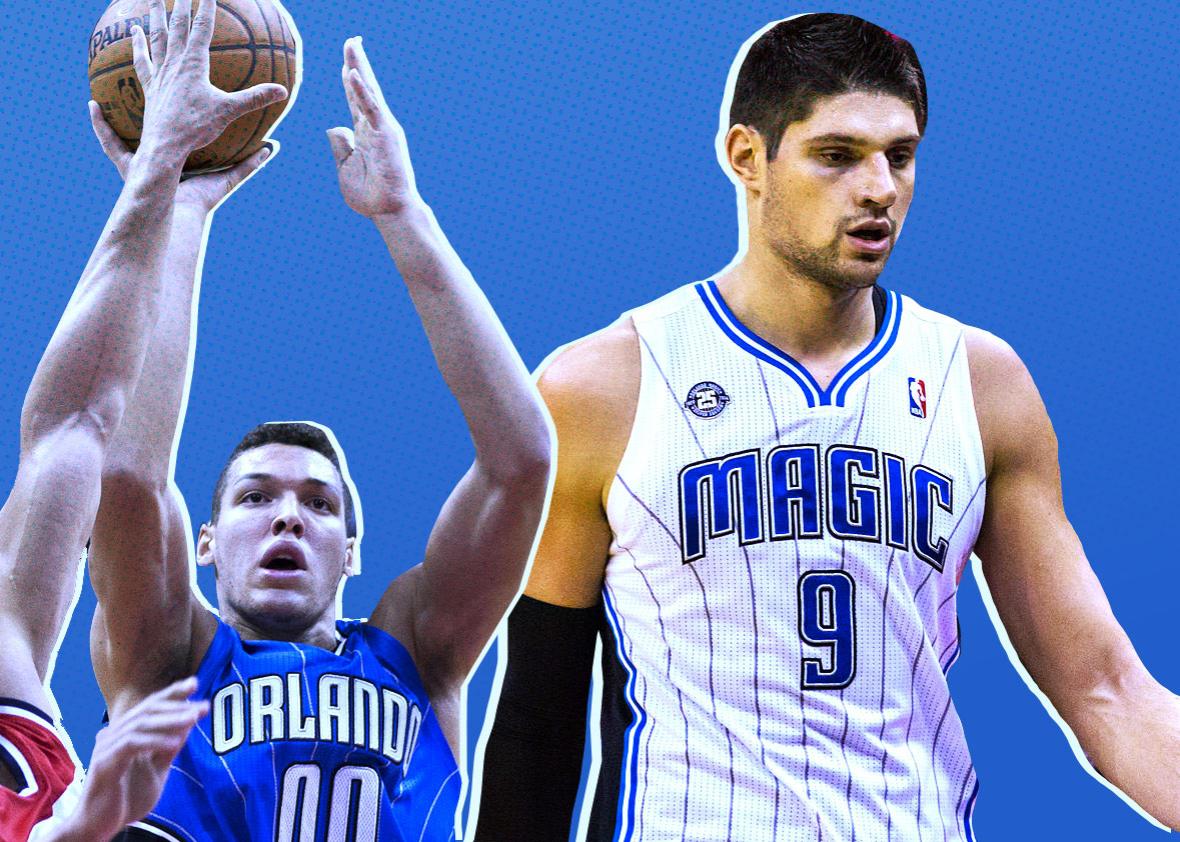Last season, the Orlando Magic weren’t designed for this NBA. They were built like a hit man suffering from gout, with three centers slowly administering bruises and clogging up play. Eight games into this NBA season, the Magic are tied for the best record in the NBA—they are, somehow, a blistering offensive supernova that is also a model of efficiency.
It’s not just Orlando; the whole league is acting a little strange. The Cavaliers are a sloppy mess, the Warriors are discombobulated, and the Eastern Conference is showing surprising signs of life. It would be reckless to jump to too many conclusions so early in the season, but it’s worth pausing League Pass for a moment to consider the absurdity of it all.
The wild start reflects the NBA’s new reality. The Magic, like the rest of the league, have adapted to play fast. High-octane small ball is no longer in the future—we’re living it. As ESPN’s Kevin Arnovitz points out, the 2004 Phoenix Suns played at a pace that was considered to be untenably quick and relentless at the time. Today, those Suns would be one of the slowest teams in the NBA.
For the Magic, getting faster meant overhauling a center-heavy team of plodding klutzes, in favor of a pace-and-space offense. The team traded away center Serge Ibaka late last season, and coach Frank Vogel has opted to leave players like the defensive-minded Bismack Biyombo on the bench for longer periods of time. The Magic play with the third-fastest pace of any team in the league and boast the second–most efficient offense in the league (trailing only the Warriors).
As a result, their young frontcourt of Aaron Gordon and Nikola Vucevic is taking—and making—a lot of threes. Gordon’s play is especially stunning. The fourth-year power forward is averaging 21 points and 9 rebounds per game while making 58 percent of his three-point attempts. A remedial knowledge of statistics tells me that Gordon’s long-distance shooting is likely to regress, given that he has a career mark of just 30 percent from behind the arc. But he’s nonetheless showing signs that, given space on the floor, he can be a very effective modern big man. (If he does keep this up, then Orlando-area sculptors should break out the modeling clay and start preparing for statuary.)
High-volume shooting offenses are more prone to wild swings, and much of this season’s unpredictability can be traced to teams that are flinging shots at a similar pace to the Magic. Eastern Conference squads with low expectations are playing fast and loose, injecting some life into a conference that was supposed to be historically bad. Five of the league’s top 10 most efficient offenses are in the East, and neither Boston nor Cleveland—last year’s conference finalists—are on that list. Members of this petite bourgeoisie have shown they are more than willing to take 90 shots a game like the Golden State Warriors even if their jerseys happen to read “Brooklyn Nets” or “Indiana Pacers.”
For the league to remain on its current helter-skelter course, these kinds of teams will need to keep making baskets. It’s a lot to ask! Most of them will come down to Earth at some point. But if they keep taking shots at a blistering clip, anything can happen. Just ask the Orlando Magic.
